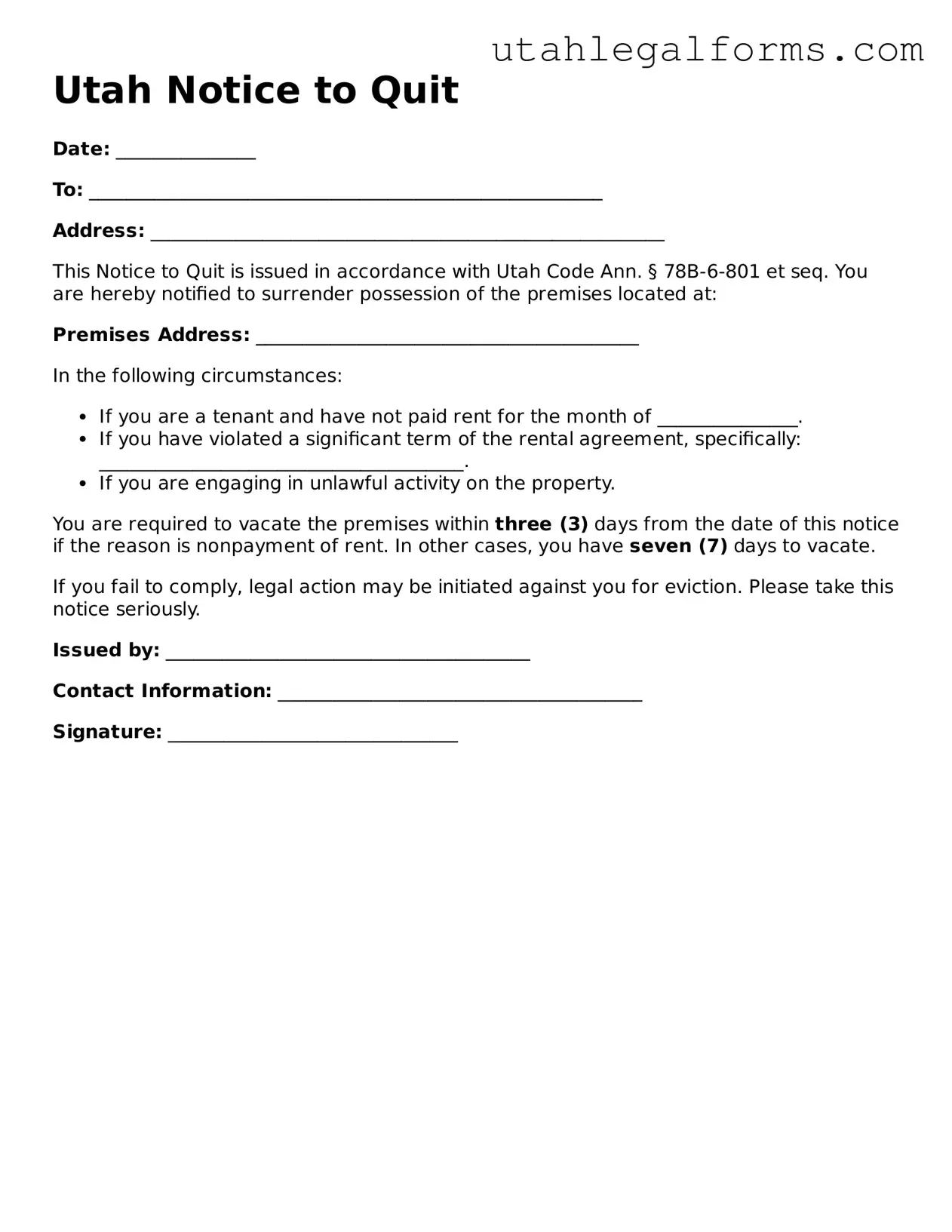Official Notice to Quit Form for Utah State
The Utah Notice to Quit form is a legal document that a landlord uses to inform a tenant that they must vacate the rental property. This notice typically outlines the reasons for the eviction and provides a timeline for the tenant to leave. If you need to fill out this form, click the button below to get started.
Access Notice to Quit Now
